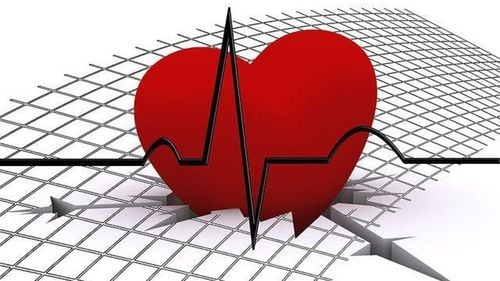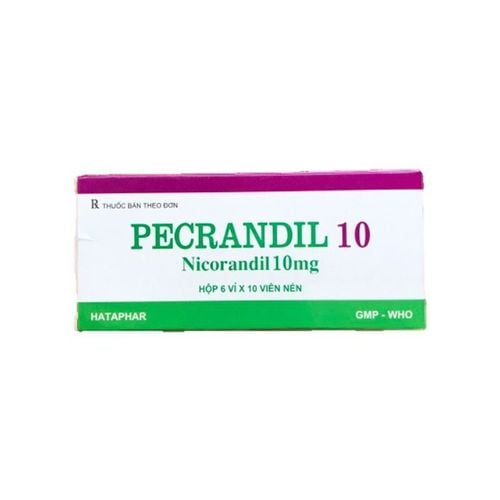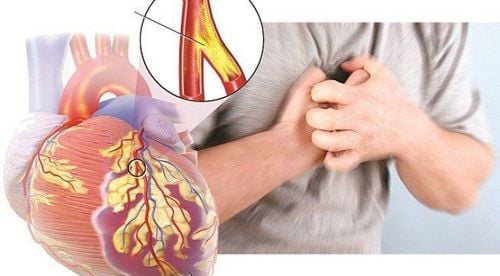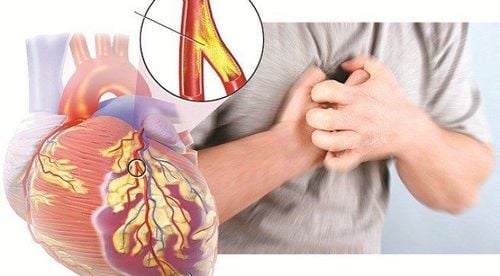This is an automatically translated article.
In cardiogenic shock, treatment should be prompt, hemodynamic support to prevent organ dysfunction and failure, address the cause of cardiogenic shock, support cardiac function, and provide basic resuscitation.1. What is cardiogenic shock?
Cardiogenic shock (also known as cardiogenic shock) is a condition in which cardiac output is reduced and the body's tissues cannot meet the oxygen demand. In cardiogenic shock, the patient's systolic blood pressure is usually <80 mmHg in the absence of vasopressors and persists for at least > 30 minutes. At the same time, the patient has signs of paleness, shortness of breath, rapid pulse, low blood pressure, sweating...
The cause of cardiogenic shock is usually due to heart diseases such as: Decreased myocardial contractility (in disease) myocardial ischemia, myocardium due to bacterial or viral infections, myocardium due to poisoning...); increased afterload (in severe pulmonary embolism, aortic stenosis); acute cardiac tamponade due to acute pericardial effusion; mechanical damage of the heart, arrhythmia.
2. How is cardiogenic shock treated?
When in cardiogenic shock, treatment should be prompt, hemodynamic support to prevent organ dysfunction and failure, resolve the cause of cardiogenic shock, support cardiac function, and provide basic resuscitation. The main treatment methods are as follows:
Initial management:
Accurately identify the state of cardiogenic shock, at the same time minimize exertion, establish an intravenous line, support oxygen. Electrocardiogram, confirm the diagnosis of acute myocardial infarction, use fibrinolytic drugs in case of transportation to the nearest interventional center for more than 3 hours. Fluid resuscitation to improve microcirculation and increase cardiac output. If there is a large lack of intravascular fluid, use colloidal solutions. If hypoalbuminemia, use albumin solution used in cases of hypoalbuminemia. Use vasopressors to keep systolic blood pressure above 90 mmhg. Administration of vasodilators to reduce afterload leads to increased cardiac output and improved microvascular perfusion and cellular metabolism in patients with cardiogenic shock.
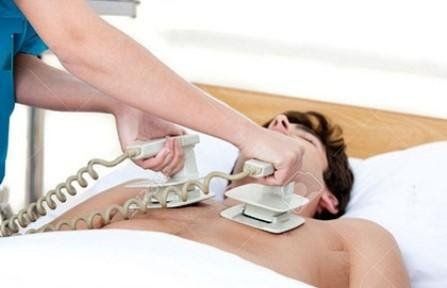
Sử dụng máy sốc tim cho bệnh nhân
Mechanical support measures:
Cardiopulmonary bypass: The purpose is to maintain artificial hemodynamics to replace the contractile function of the heart muscle, creating conditions for the heart muscle to rest for recovery. This method is used in cases of cardiogenic shock due to cardiomyopathy, severe pulmonary embolism, and irreversible conduction disturbances. Aortic retrograde balloon pump: This method is used in cases of cardiogenic shock due to cardiomyopathy, pulmonary embolism to reduce afterload and increase coronary perfusion. Using a defibrillator: What is a defibrillator? Cardiac shock machine is a device with many functions used in surgery, active resuscitation,... The use of a shock machine is usually simple and fast, so it is always used in many cases of treatment and emergency. some cardiovascular diseases. Treat the cause:
Cause of myocardial infarction: Consider the indication for myocardial reperfusion if myocardial infarction causes cardiogenic shock in the first 6 hours. Causes of large pulmonary artery occlusion: Maintain stable central venous pressure. Use dobutamine and noradrenaline to raise blood pressure. Acute tamponade due to pericardial effusion: Indication of intravenous fluids to increase central venous pressure, then drain the pericardial fluid and treat the cause. Shock due to cardiac mechanical damage: This case requires emergency surgery. Arrhythmic shock: Arrhythmic causes require arrhythmia treatment. Consider use of a defibrillator when tachycardia causes hypotension.
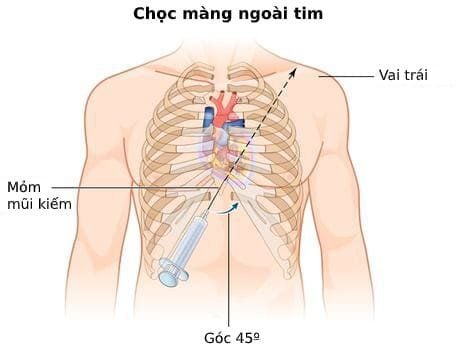
Ép tim cấp do tràn dịch màng ngoài tim
Good control of accompanying cardiac arrhythmias: Using a defibrillator, placing a temporary pacemaker. Correction of electrolyte and acid-base imbalances. Use vitamin B1 if vitamin B1 deficiency myocarditis is suspected, corticosteroids if immune myocardial damage is suspected. Currently, Cardiovascular Center - Vinmec International General Hospital is one of the leading centers in the country for examination, diagnosis, screening and treatment of cardiovascular diseases. With the convergence of a team of experienced and reputable experts in the field of surgery, internal medicine, interventional cardiac catheterization and the application of advanced techniques in the diagnosis and treatment of diseases. Cardiovascular management, along with a system of modern equipment, on par with the most prestigious hospitals in the world such as: 3 Tesla MRI (Siemens), 640 CT machine (Toshiba), other equipment EVIS EXERA III advanced endoscope (Japan Olympiad), Avace high-end anesthesia system, Hybrid operating room according to international standards... The Cardiovascular Center at Vinmec International General Hospital has achieved many successes. work and gain the trust of a large number of patients.
Please dial HOTLINE for more information or register for an appointment HERE. Download MyVinmec app to make appointments faster and to manage your bookings easily.




